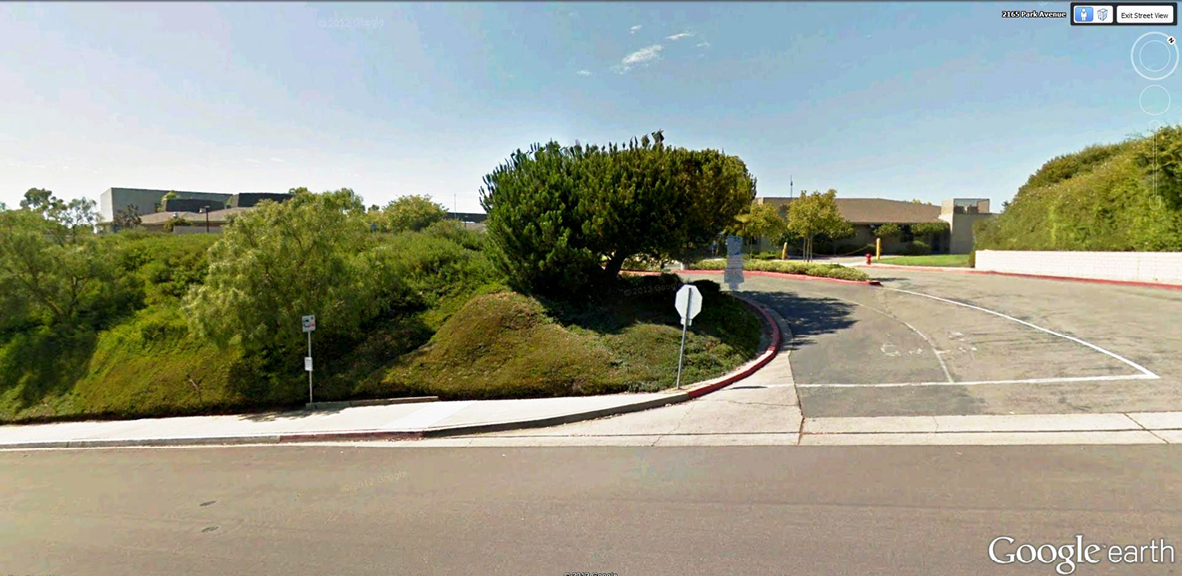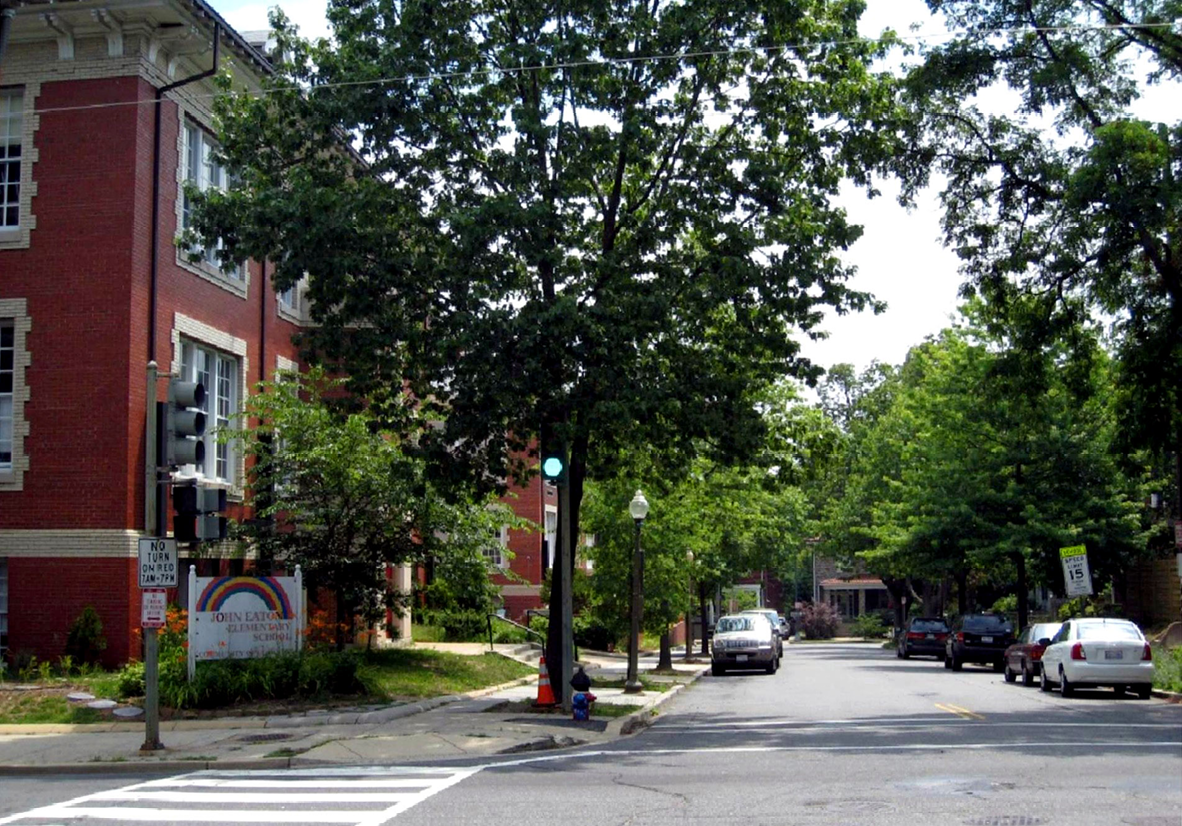Getting to School Shouldn’t Be So Hard

Walk to School Day (photo courtesy of US Department of Transportation)
When I give talks about the issues in this book, I frequently ask my audience, “How many of you walked or rode a bike to school as a kid?” Hands go up all over the room. Just about everyone aged 40 or older. Then I ask, how many have kids who walk to school now? A few hands go up, generally well under ten percent of the room, even though half or more may have children.
As recently as 1973, some 60 percent of school-age children walked or biked to school. I’m told that, today, the portion is about 13 percent. All this while we have a serious problem with childhood obesity, which has more than doubled in children and tripled in adolescents in the past 30 years, according to the National Centers for Disease Control. What’s wrong with this picture?
Saratoga Springs, in upstate New York, is a relatively affluent small city popular with tourists and known for its historic architecture: the Saratoga Race Course, which has been hosting horse racing since 1863, and Saratoga Spring Water, which has been bottled in the community since 1872. There are mineral springs all over town. Its Performing Arts Center is the summer home of the Philadelphia Orchestra and the New York City Ballet.
In other words, Saratoga Springs is the kind of old-fashioned place where one might hope to find kids walking or biking to school. Not so, it turns out. A 2009 story initially reported by Andrew J. Bernstein in The Saratogian attracted attention from urbanists all over the country when the Maple Avenue Middle School enforced a policy against riding a bike to school, even on national Bike to Work Day. The fact that the student was riding alongside his mom didn’t seem to matter, according to Bernstein’s article:
“Janette Kaddo Marino and her son, Adam, 12, wanted to participate in the commuting event, so the two set off to Maple Avenue Middle School on bicycles May 15. The two pedaled the 7 miles from their east side home, riding along a path that extends north from North Broadway straight onto school property.
“After they arrived, mother and son were approached first by school security and then school administrators, who informed Marino that students are not permitted to ride their bikes to school.”
Ironically, the Saratoga Springs School Board had declined to apply for a state grant to improve things under the state’s Safe Routes to School program. In this case, of course, safety concerns were minimized by the fact that the kid was riding on a dedicated trail separated from traffic and with adult supervision. Adam and Janette Marino were also experienced cyclists, having ridden as a family from Buffalo to Albany along the Erie Canal.

Biking not encouraged in Saratoga Springs (photo via Google Earth)
The policy is certainly over the top, taking power to judge kids’ safety out of their parents’ hands, but I can’t say that it is irrational. The problem is the school’s location, completely isolated from its community instead of placed within the community where walking and bicycling would be a much more convenient and common choice.
Perhaps the policy has been relaxed by now. Bernstein wrote in a comment on my blog that the school board had agreed at least to consider it, and also that the Marinos continued to ride together to school with the school board’s assent.
A little over a year later, I ran across a similar story from Laguna Beach, California. It was another special event: national Walk to School Day (or, as some places called it, “Walk and Roll to School Day”). In 2012 over 4,000 schools around the country participated in the event, including 495 in California, from Eureka to Atherton to Beverly Hills to Long Beach.
But Laguna Beach said nope, not here, according to a 2010 article by Cindy Frazier in the Laguna Beach Coastline Pilot. Not even for one day did the city want its kids getting to school via any mode other than a motor vehicle. It’s just not safe, they argued, probably not without some reason, given California traffic. But riding in a car isn’t exactly safe, either, given that each year some 250,000 children are injured in automobile accidents, including the 2,000 kids who die as a result. Motor vehicle accidents are the leading cause of death for children between ages two and 14.
As it turns out, there isn’t much within walking distance of Laguna Beach’s public schools, anyway. Of the four schools in the Laguna Beach Unified School District, only the high school is centrally located; Thurston Middle School and the two elementary schools are all on the fringes of the developed area.
Frazier writes:
“Unfortunately, the school district is right: It’s just not safe or practicable in Laguna Beach for most kids to walk or roll to school.
“But [complete streets advocate Les] Miklosy is also right: In some neighborhoods, kids could walk or bike to school. But that’s not a lot of kids.”
Here is the particularly disheartening part:
“Demographics, politics, and economics have incrementally eliminated the neighborhood school…[School district representative Norma] Shelton reiterates these issues in a response to an e-mail from the Coastline Pilot:
“Our district is committed to teaching ‘lifelong fitness’ and has robust physical education and athletic programs. However, in Laguna there are few sidewalks, winding roads with blind corners and a considerable distance for our students to travel and we cannot endorse walking or biking to school so much so that, at considerable cost (parents pay a portion), we provide busing for the elementary schools and middle school.”
Is this any way to build a child-friendly community?

Thurston Middle School, Laguna Beach (photo via Google Earth)
Accompanying this chapter is a street-view photo of Thurston Middle School. Notice how the sidewalk actually stops at the school entrance, guaranteeing that any kid who dares to walk to school will find herself immediately in the path of motor vehicles. And that definitely would not be a good thing: parental traffic at Thurston, chauffering kids to and fro, has apparently gotten so heavy and unwieldy that the school published a flyer full of sternly worded cautionary rules and a complicated-looking traffic flow map.
The Thurston dads have formed a volunteer “strike team” of on-site traffic managers whose motto is “get in, get it done, get out!” Parent or kid, sounds like a nice way to start your day, no?
Frazier observes that another school in Thurston’s district, El Morro Elementary, is basically near nothing, not even the community of Laguna Beach itself. It does sit on the Pacific Coast Highway, across from the surf, and no doubt has a spectacular view; it could hardly be closer to what in theory should be a terrific amenity for the kids. But it’s hard to imagine that they get to enjoy it much, given the traffic in between the school and the beach.
As of the 2010 census, there were 10,281 households in Laguna Beach, 20 percent with children under 18. The median annual income for a family is $156,115, two and a half times that of the US as a whole. The median value of an owner-occupied home there is “$1,000,000+” according to census data.
Kids from forty countries participated in Walk to School Day, which continues as an annual event. In the US, walking and cycling to school may no longer be the norm, sadly, but at least for one day thousands of parents, kids, and communities make an exception. Michelle Obama has promoted the event. Typically, there are volunteer escorts, special treats, and the like, to make sure that it is safe and fun. As a result, a lot of kids love the event, and it helps people see what might be possible if a little more attention and more thought were paid school design and location. In Washington where I live, it is celebrated on every local TV station. Even former federal Transportation Secretary Ray LaHood participated when he was in office.
But, in Laguna Beach, it’s just another day in the O.C.
More about Schools and Community
Principles for “Smart Growth Schools”
Schools used to be the heart of a neighborhood. Children and not a few teachers could walk to class, or to the playground or ball field on the weekend. Walking was relatively easy, because the schools were placed within, not separated from, their neighborhoods. Their scale was welcoming and their architecture was not just utilitarian, but signaled their importance in the community.
I’m not the only one who would like to see a resurgence in neighborhood-based schools. For those of us who are interested, there is a website dedicated to providing resources on “smart growth schools.” The site, which includes a well-annotated “report card,” a listserv, links to some very good resources, and a pathway to hands-on assistance, was created by Nathan Norris, who has been developing community performance indicators for at least a decade.

John Eaton Elementary, Washington (photo by F. Kaid Benfield)
The report card, which is designed to assess community policy toward schools, is especially good, with 24 pages of great tips and advice based around eleven key principles:
- Restoration Preference: Will old schools be restored rather than replaced so long as the cost is less than a new school? This is a separate question than whether the school building will be recycled for another use (i.e., adaptive reuse).
- Holistic Planning: Is school planning done in conjunction with land planning and transportation planning or are these segregated?
- Community Buy-in: Is the school planning process designed to secure meaningful community input prior to decision-making?
- Elimination of design constraints: Does the community have the flexibility to size and design the school efficiently to fit into the site and the neighborhood?
- Neighborhood School: Is the school embedded into a walkable neighborhood so that most students can reach it safely without traveling by car or bus?
- Prominent Site: Is the school sited in a prominent location (e.g., terminated vista or on top of a hill) so that it communicates the importance the school has in the culture of the community?
- Shared Use: Is the school sited or designed so that it can share uses with the community such as a gym (or YMCA), park, ballfields, community meeting space, day care, library, performance theater, art studio, cafeteria/restaurant, community garden, or health clinic?
- Flexibility: Is the school designed so that it can grow (independent additional wings, floors, or structures) or contract in size and services (areas can be removed or adaptively reused if no longer used for school purposes) as the neighborhood grows or contracts so that it remains useful over a longer period of time?
- Connected Learning Environment: Does the school connect itself to effective distance learning opportunities; is the school connected to the local community through interaction with local businesses or through a community service program?
- Community Pride in the Design: Is the school designed so that it generates community pride as measured by a Visual Preference Survey (VPS)?
- Green building certification: Does the construction or renovation of the school follow best practices regarding energy efficiency, water efficiency, indoor air quality, daylighting, light pollution, and earth-friendly construction techniques as set out in the LEED for Schools program?
That’s a heck of a list. Well done.